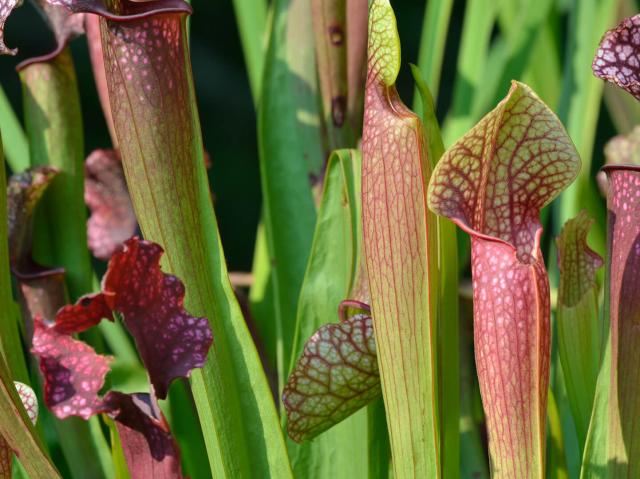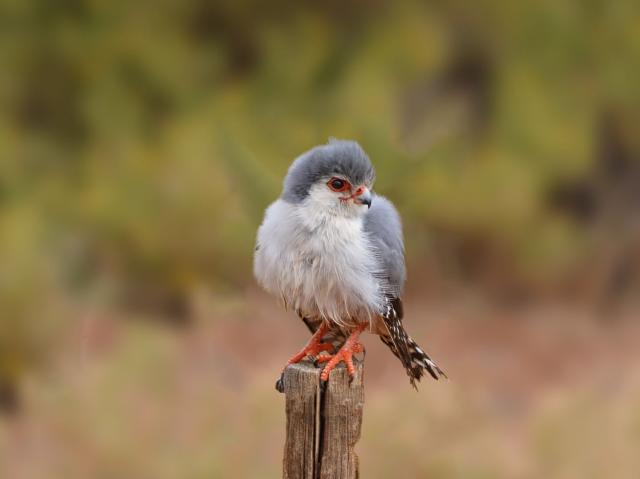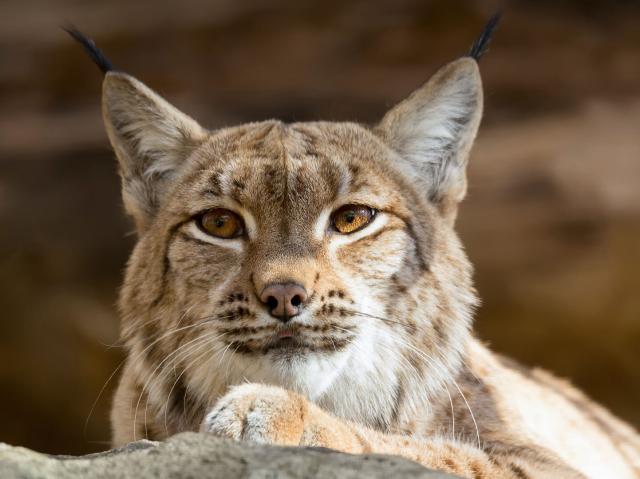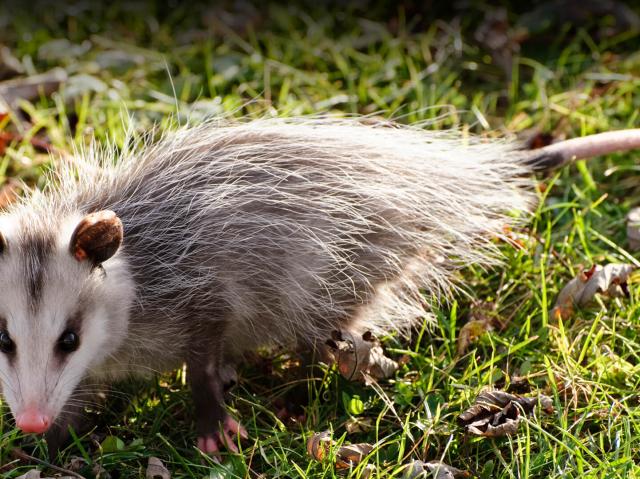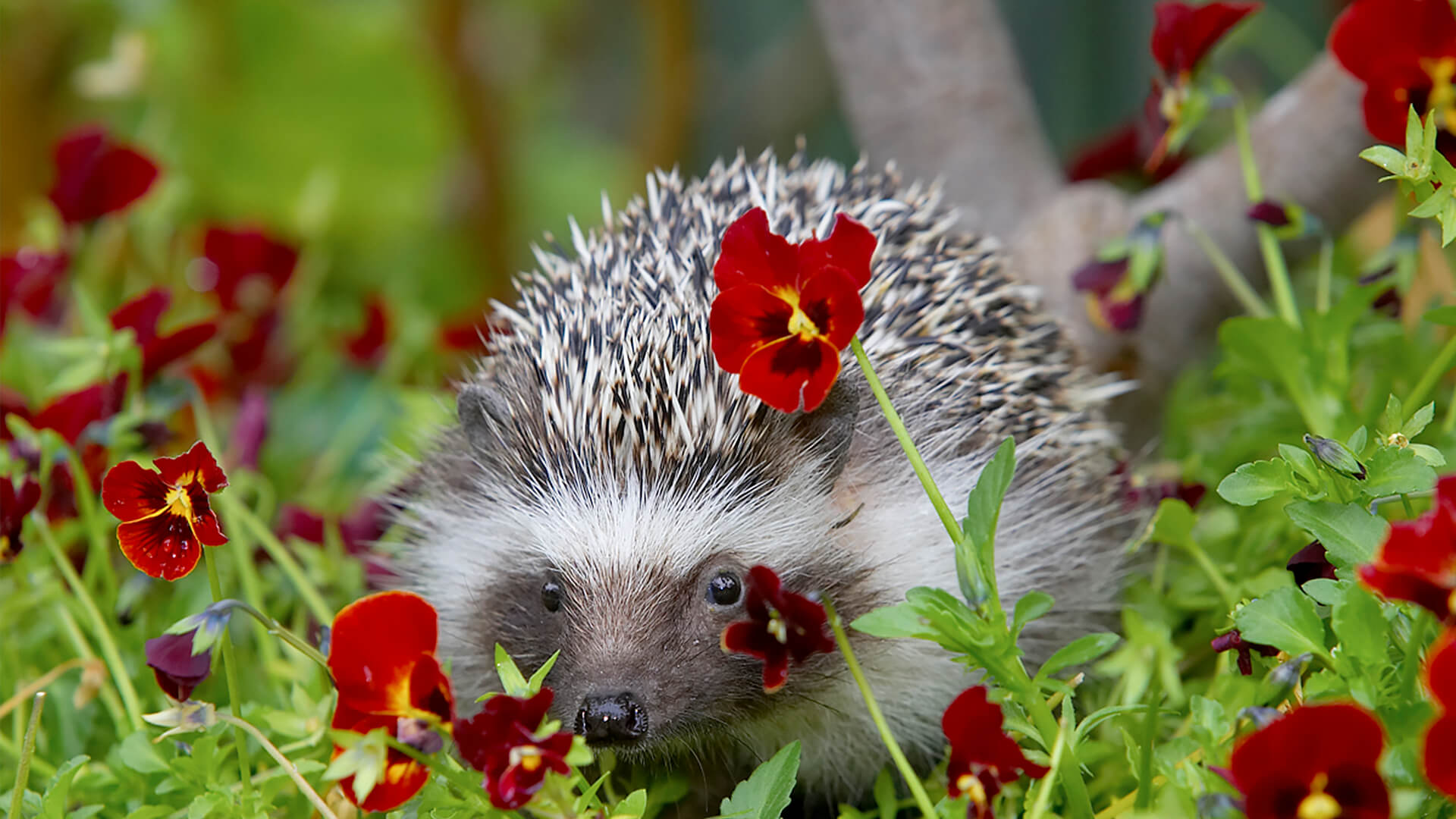
Hedgehog

- CLASS: Mammalia (Mammals)
- ORDER: Erinaceomorpha
- FAMILY: Erinaceidae
- GENUS: 5
- SPECIES: 16

ABOUT
A pincushion with legs: The hedgehog is a short and stout little mammal that is sometimes called a pincushion with legs! Most mammals have fur or hair that is somewhat flexible and soft. But the hair on the back of a hedgehog is a thick layer of spikes (or modified hairs) known as quills. These quills are made of keratin, the same stuff our hair and fingernails are made of.
Hedgehogs can be white or light brown to black, with several shades found in bands along their quills. Their belly, face, and neck are covered in coarse hair. Some hedgehogs have a dark brown or black mask across their eyes. These interesting critters have small but powerful legs and big feet with five toes each. The exception is the four-toed hedgehog that has—you guessed it!—four toes. Curved claws make hedgehogs amazing diggers. A long snout with a wet nose gives them an excellent sense of smell. Their ears are large compared to body size, giving the spiky little creatures a good sense of hearing.
Is that a porcupine? No! The hedgehog's closest relatives are moonrats, shrews, and moles. People often confuse porcupines and hedgehogs because the two share a common characteristic: quills!
The hedgehog’s best defense against predators is its spiky outer armor. With about 3,000 to 5,000 quills covering its back, the hedgehog can protect itself from predators that think it would make a tasty snack. When threatened, the hedgehog raises its quills upright in a crisscross pattern, making its body pointy and sharp. It uses its belly muscles, back muscles, and extra skin to tuck in its head, legs, and tail to curl into a complete ball, protecting its soft belly. The solid ball of spikes is hard for predators to open.
Ancient Roman and Chinese folklore tell tales of hedgehogs carrying fruit on their quills. Although fruit, leaves, and twigs may get stuck on one of these “pincushions,” hedgehogs do not use their quills to carry food. And unlike the hedgehogs from the book Alice in Wonderland or the popular video game “Sonic the Hedgehog,” they cannot roll along when curled into a ball.
Perhaps the biggest myth of all is that a hedgehog can shoot its quills! Can you shoot the hair out of your head? Just like your hair, a hedgehog’s quills can fall out or break off, but the hedgehog cannot shoot its quills to defend itself.
In Europe, people consider hedgehogs to be friends of backyards and gardens. These hedgehogs are often found in flower beds, vegetable gardens, and compost heaps. Some gardeners make nests of straw, hay, or boxes to attract hedgehogs. In turn, the hedgehogs eat snails, slugs, and other garden pests.
HABITAT AND DIET
The hedgehog can live in many different habitats, from desert to forest and beyond! The desert-dwelling types live in areas that receive little rainfall. Others live throughout Asia. European hedgehogs are widespread in Europe, from the Mediterranean to Scandinavia. In Africa, hedgehogs live in savannas, forests, and even city streets, where they waddle along, foraging for insects.
Hedgehogs live on the ground, never in trees. They like to live alone and may be territorial. Some hedgehogs dig burrows in the soil up to 20 inches (50 centimeters) deep. Others prefer to make nests with dead leaves, grasses, and branches. Desert hedgehogs hide between boulders or burrow into the sand to escape the desert heat. In Asia, long-eared hedgehogs often move into burrows left by turtles, foxes, gerbils, and otters.
Hedgehogs are insectivores. But they can also eat other ground-dwelling creatures such as slugs and snails. The European hedgehog dines on earthworms, beetles, millipedes, caterpillars, slugs, snails, earwigs, and birds’ eggs and chicks. Some hedgies, like those in Africa's deserts, even eat dead wildlife, small rodents and snakes, and scorpions. The menu of a South African hedgehog includes all the above as well as fungi, frogs, lizards, termites, grasshoppers, and moths.
Don’t forget the veggies! Some hedgies include fruit, roots, grass, leaves, and seeds along with their creepy-crawly main course.
Hedgehogs at the San Diego Zoo and San Diego Zoo Safari Park eat a well-balanced diet of vegetables, cat kibble, pellets made for insectivores, crickets, and mealworms.
Hedgehogs are active at night. They dig, chew, and forage through the darkest hours. Although they make amazing animal ambassadors for the San Diego Zoo, hedgehogs don’t make good pets. In fact, it is illegal to have a hedgehog as a pet in many places. Hedgehogs have teeth—up to 44 of them, and, like any wildlife with teeth, they can bite! They can also carry parasites on their quills. Hedgehogs are wondrous creatures, but remember that they just aren’t as cuddly as a dog or a cat.
FAMILY LIFE
Hooray for hoglets! Baby hedgehogs are called hoglets or piglets. An adult female usually gives birth to four to seven young once or twice a year. Newborns look like chubby white caterpillars. They do have quills at birth, but these are soft and flexible. During birth, the quills are covered by puffy, fluid-filled skin to avoid hurting the mother. Within a day, the hoglet’s skin shrinks, and about 150 white quills appear.
At a week old, hoglets may push each other over the milk supply. By the time they are a month old, they have opened their eyes, and their back has dense, dark quills. The mother takes her hoglets on foraging trips, showing them how to find food.
If a young hedgehog is separated from its mother, it may make a twittering or a whistle sound to let Mom know where to find it. Adult hedgies squeal and grunt when they are excited or afraid. They also grunt while foraging.
Depending on the species, it takes 6 to 13 weeks for the hoglets to be weaned. When they are ready, they leave their mother to begin a new life as a solo hedgie.
CONSERVATION
Although not currently listed as Threatened or Endangered, many hedgehogs face challenges. Hugh’s hedgehog Mesechinus hughi (also known as the Shaanxi hedgehog) is a native of China. It is on the decline as some people use them for food and medicine. The Daurian hedgehog Mesechinus dauuricus has lost habitat in much of China, Mongolia, and Russia as people increase mining activities, graze livestock, and set out poison to kill local rodents. The Indian hedgehog Paraechinus micropus, found in India and Pakistan, is losing some of its range as farms expand into its desert habitat. The Madras hedgehog Paraechinus nudiventris of southern India suffers habitat loss due to the collection of wood for fuel, farmland increases, and the quick growth of cities.
Still, the good news is that most hedgehogs have stable populations and are not at great risk. Yet hedgehogs will need our help someday. More research should be done on these amazing little mammals. The more we know about them, the better we can protect them.
By supporting San Diego Zoo Wildlife Alliance, you are our ally in saving and protecting wildlife worldwide.
LIFE SPAN
3 to 8 years in the wilderness; up to 10 years in expert care
YOUNG
Gestation: 4 to 6 weeks
Number of young at birth: 1 to 10; average is 4 to 7
Weight at birth: Less than 1 ounce (3 to 25 grams)
Age of maturity: 9 to 11 months
SIZE
Length: 4 to 12 inches (10 to 30 centimeters), depending on species
Weight: 5 to 56 ounces (155 to 1,584 grams), depending on species
FUN FACTS
Hedgehogs can travel up to 2 miles (3 kilometers) a day and move at a speed of up to 6.5 feet (2 meters) per second.
When a desert hedgehog wants to eat a scorpion, it must first bite the stinger off the tail. Some hedgehogs can even eat venomous snakes.
Hedgehogs are active at night—but sleep all day, up to 18 hours!
The hedgehog makes lots of foamy saliva in its mouth and smears it over its quills. It may do this to keep parasites off the skin or to make its quills taste bad to predators.



